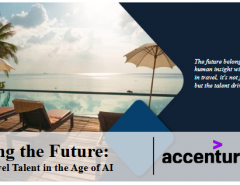For millenniums, ecological balance was maintained by the nature itself, which was disrupted by the advent of the industrial era. Thereafter, unrestrained growth in industrialization, vehicular transportation, exploitation of natural/ mineral resources and unplanned urbanization disturbed the harmonious relationships between the environment and human beings. This disruption was not immediately manifested, since, for most of the 20th Century, economic progress was limited to the “western economies”, constituting a small share of population as well as geographical area. The impact of lasting damage like ozone layer, greenhouse gas emissions and deforestation came into public consciousness towards the end of the 20th Century and lead to UN protocols. However, this coincided with saturation in economic growth in the “developed economies”, while large emerging economies were going through their growth phase. Hence, restraints on “developing economies” are perceived, to some extent, as a form of “neo colonialism”.
Furthermore, even within the “emerging economies”, there is lack of congruence as to what represents “sustainable development”. For most governments, alleviation of poverty and socio-economic development takes priority and they tend to “slur over” environment damage, which is rationalized as “small sacrifice for larger good”. While there is merit in such school of thought, the costs of environment degradation are so high that an unambiguous approach is required to revive a balanced relationship between human activity and the environment. This necessitates widespread community awareness of the feasibility to adopt judicious exploitation of natural resources along with restraint in consumption as well as increased use of regenerative resources, without compromising on economic or lifestyle needs.
Ushering in new set of societal values needs to be done in calibrated manner and with tenacity. It’s easier to achieve traction with issues that are manifest in public consciousness. Air pollution, water scarcity and untreated municipal solid waste impact health of citizens in most cities of India. Hence, highlighting these environment issues, analyzing their causes and showcasing efficacy of remedial measures based on advanced technologies could catalyze widespread awareness and broad-based acceptance. It’s emphasized that this needs to be done in a holistic and technology agnostic manner avoiding knee-jerk reaction or eschewing hype, which is a distinct risk with the influence that social media now has on citizens and policy makers.
In case of “Clean Air”, particulate emissions from Diwali crackers and vehicles occupy significantly higher mindshare than their actual contribution to particulate emissions. Green crackers and green transport systems are definitely to be mandated and incentivized. At the same time, there needs to be recognition that particulate emissions linked to inefficient burning of biomass (including stubble burning) and construction activity are equally critical issues, which cannot be addressed only through environment laws. There is need to put an economic cost on such environment pollution and resultant health hazards, which should set the norm for extending fiscal incentives to “Green Businesses” that mitigate such environment pollution. Advanced bio-fuels from bio-waste, if adequately incentivized, would make an economic case for organized collecting, aggregating and processing of biomass/ agri-waste to assured quality solid/ gaseous/ liquid biofuel products that can replace fossil fuels at affordable prices. Likewise, green construction materials and construction practices, if incentivized, would mitigate adverse environmental impact of buildings and infrastructure projects.
“Clean Water” availability is perhaps the biggest challenge that India faces. Niti Aayog’s “Composite Water Management Index (CWMI)” Report of 14th June 2018 indicates that (i) 600 million Indians experience high to extreme water stress (ii) 75% households do not have access to drinking water on premises, while 84% of rural households do not have piped access (iii) 70% of water is contaminated, which ranks India as 120 out of 122 countries in terms of water quality. The crisis is huge and its imperative that water conservation and treatment/ re-use is rapidly scaled up. Behavioral change in water use can come only though the levers of pricing and controlled supplies, while extending DBT support to economically weaker sections of society. Rain water harvesting and used water treatment and re-use (for all applications, beyond those involving human intake) must be mandated for all establishments, commercial and industrial (C&I) as well as residential. To achieve this, apart from laws and regulations, it is necessary to establish an enabling eco-system, comprising green entrepreneurs and supportive financing instruments. This will enable implementation of sustainable water management schemes under “green business” framework, with efficacy and accountability. Likewise, for water conservation in agriculture, solar irrigation pumps scheme must mandate downstream “micro-irrigation” systems, which will incentivize low water intensive farming.
“Waste Management” has seen a reasonable amount of traction, through the Swatch Bharath Abhiyan. However, there is need to institutionalize systems and introduce technology interventions to ensure (i) source segregation of solid waste (ii) collection and aggregation of segregated waste (iii) appropriate processing of green waste along with controlled disposal of segregated ‘dry’ waste and hazardous waste (iv) deployment of advanced bio-technologies for higher value products from processing solid waste. In case of solid waste, too, implementation should be under “green business” framework, with efficacy and accountability.
In conclusion, I will recount a Cree Indian proverb, “Only when the last tree has died and the last river has been poisoned and the last fish has been caught, will we realize we cannot eat money” as well as quote Robert Swan, “The greatest threat to our planet is the belief that someone else will save it”.
(The author is Chairman, FICCI Committee on Climate Change and Chairman, CVC India Infrastructure Pvt Ltd)





